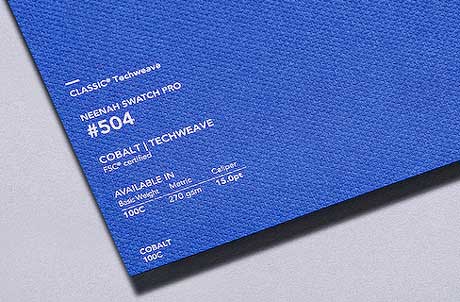
Neenah has refreshed its Classic Papers swatchbook that now features a new numbering system designed specifically for its Neenah Swatch Pro extension for Adobe Illustrator, Photoshop, and InDesign. The Neenah Swatch Pro has progressed from the revolutionary, first-ever paper extension for select Adobe software, created “to transform traditional print design.” With the addition of the numbering system, along with other recent advancements, designers can search for paper by attribute, such as colour and texture, and quickly incorporate it into their design by using the number they see in the swatchbook. The new technology simplifies paper specification for designers at all levels. In addition, when packaging print files, the paper specifications are clearly identified for the printer.

“This innovative thinking essentially ‘evolutionizes’ the design process by allowing designers to quickly move from swatchbook to screen, to instantly see their designs transformed with color and texture,” said Ellen Bliske, Director of Product Management for Neenah. “By more closely aligning these two creative tools, we help designers streamline their paper selection and specification process.” The updated Classic Papers swatchbook is the first of Neenah’s product lines to adopt the numbering system, acting as a guide to help designers familiarize themselves with the way these tools now work together. Neenah has also combined its previous three Classic Papers swatchbooks into one comprehensive showcase neatly organized by colour family, and numbered for convenience. The new book also features a selection of printed samples designed to inspire and highlight the beauty of print on paper.
“When considering paper for their designs, a shelf full of swatchbooks can leave a designer wondering where to start,” Bliske added. “From there, they have to either imagine how the design will translate on different papers or spend time scanning and color-correcting that digital ‘paper swatch’ to better visualize the result. Neenah continues to adapt to the way designers work with and specify paper and advance our tools to seamlessly work between their physical and digital worlds. We see these continued advancements as integral in guiding the next generation of designers through the print design and production process.”






Your article helped me a lot, is there any more related content? Thanks!